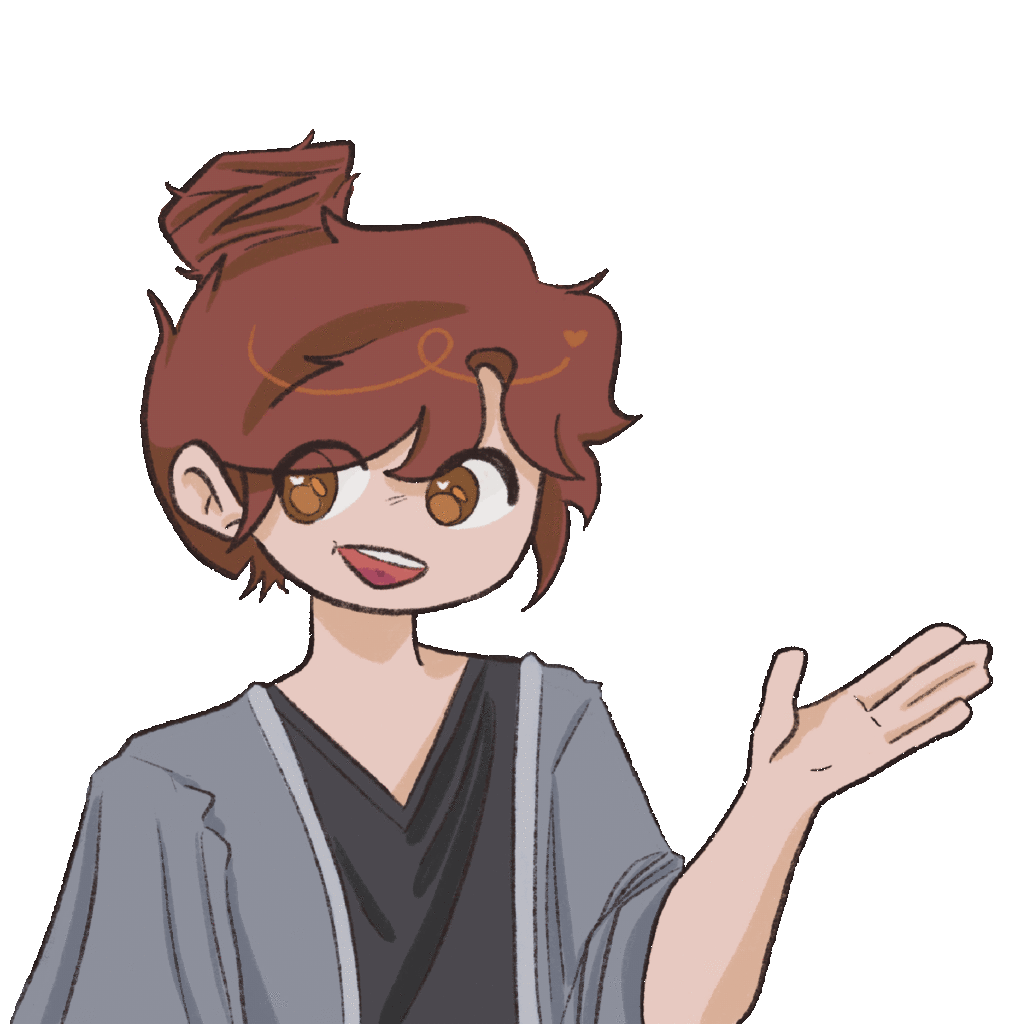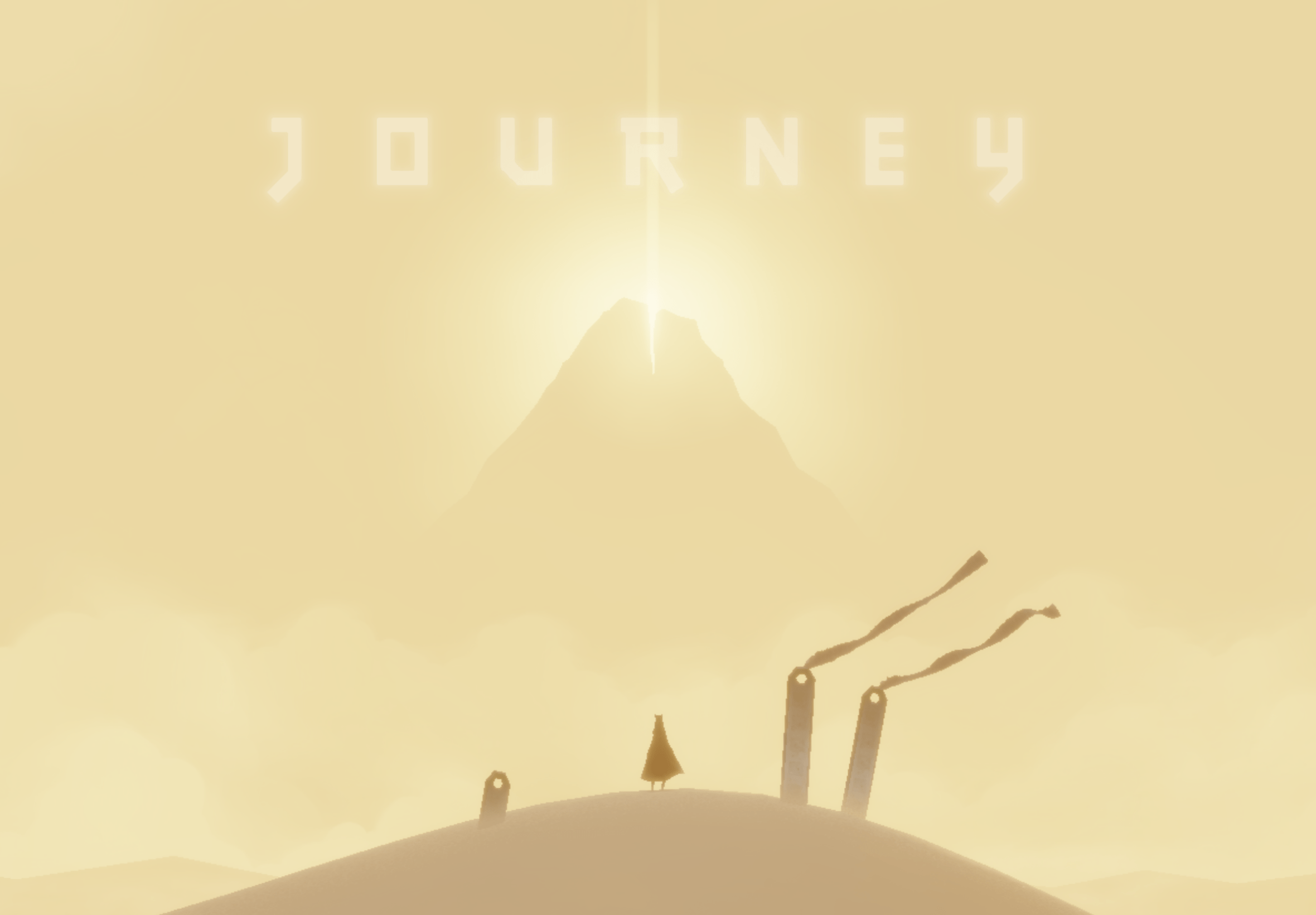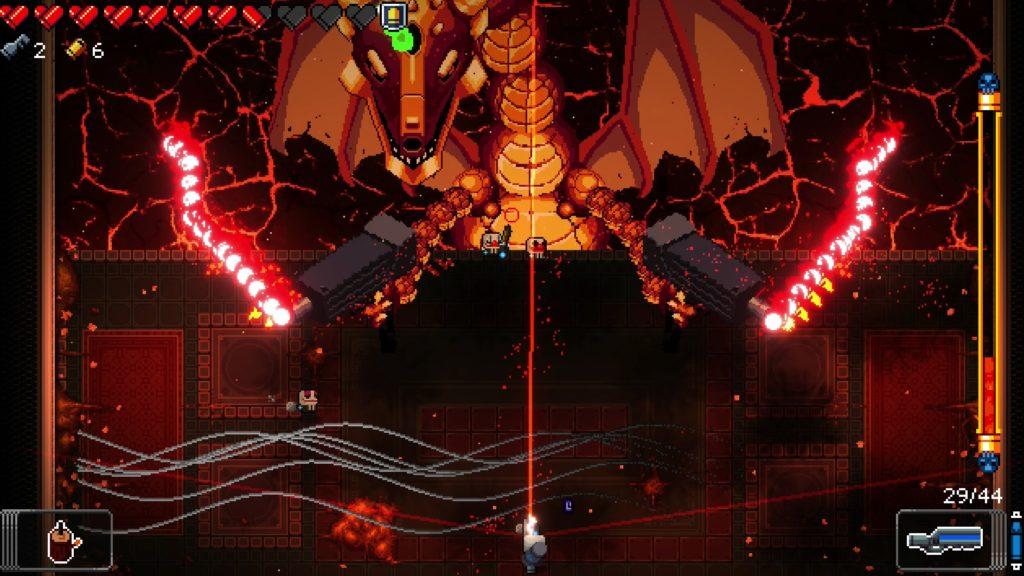For this week’s critical play, I decided to play Journey. This is an indie game developed by Thatgamecompany and available to be played on PC, PlayStation, and iOS. I played the game on my iPad. The target audience is players who can appreciate the hallmarks of the walking simulator genre—namely mechanically-simple, slow-paced, and story-driven games where the focus is on exploration and aesthetic appreciation of the game environment.
Journey embodies all these traits in its formal elements. Players are initially thrust into a vast, desolate desert game environment gives players a sense of solitude and piques one’s curiosity as you are gently nudged to discover where you are meant to go. The objective of the game is simply to walk towards the areas where the game directs you (often with white collectable sparkling markers) and to follow the natural progression of the story. There will usually be a monument or other structure perceivable in the horizon that requires the player to walk or glide a considerable distance to reach it—with some environmental triggers like wind that act as boundaries and interrupt player walking to prevent the protagonist from straying too far from the intended path.
Aside from simple forms of movement and the musical “calling” ability that the protagonist can activate to interact with other entities, there are few other mechanics that the player engages with. However, I was surprised by the depth in story progression you can get using these simple mechanics: sometimes it is not immediately obvious how you need to maneuver through the environment to reach a certain place via walking or flight, and just walking past something can trigger interactions and cutscenes that allow the protagonist to progress through the story.

Figure 1: I got stuck for 10 minutes trying to figure out how to navigate to the top of this high building using just simple movement abilities.
Other design choices that stuck out to me was the dynamically changing music, which, when combined with the range in color design (vibrant warm colors during the day and in the expanse of the desert and dark, cool colors when the players are in shadows or ruins) are used to signify the emotion or mood of the moment, down to the detailed golden particle effects that trail behind the player as they walk through sand or glide using the ribbons or sparkles they collected.
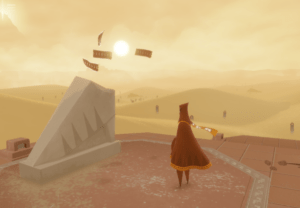
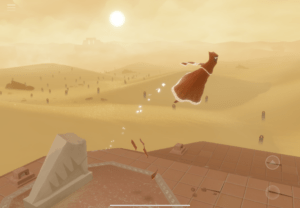
Figure 2, 3: Demonstration of the flight mechanic given by collected ribbons.
In addition, there is no dialogue. I didn’t encounter other players in my playthrough, but I have read that you can only communicate with movement and your “calling” ability rather than chatting or dialogue options—you don’t even know the other player’s name. Furthermore, the map geometry is sparse until monuments or landmarks are reached, and there is a striking sense of scale—whether it comes from the imposing, majestic buildings or simply the emptiness of the world the player walks through.
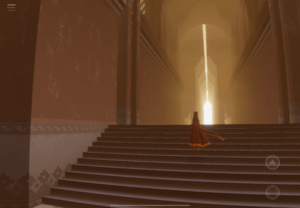
Figure 4: A long corridor inside of a large building dwarfing the player. Dark shadows contrast with a shining white light.
These design choices, along with the aforementioned formal elements and mechanics, contribute to an ebb and flow of emotional moods via environmental storytelling. Navigating through the environment alone can be relaxing or lonely, while walking with other players likely leads to a sense of fellowship as you both journey through an unknown world.
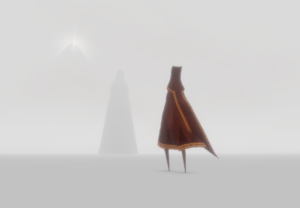
Figure 5: A cutscene demonstrating a different color palette and its corresponding dreary mood.
Based on what I observed in the hour I spent playing this game, I encountered no instances of violence or conflict. There were no hostile enemies or other forms of harm that could be imposed on the protagonist or enacted upon other entities. I have not played any other walking simulators, but the general absence of violence seems to be a common thread, and it contributes to the emphasis on sensation and discovery as the primary forms of pleasure—the lack of violence allows the player to relax and fully enjoy the gorgeous game environment, aesthetically appealing visuals, and calm music, slowly uncovering the story along the way, almost as if one is engaging in meditation. In this game, it truly is about the JourneyTM rather than the destination.
This is in stark contrast to the majority of games I have experienced and enjoy, which are FPS games like Overwatch where the focus is on eliminating other players. Matches are mechanically intense and require the player to be constantly alert so as to not be killed by other players. Those games tend to be highly stimulating (perhaps even overstimulating for certain player demographics), objective-focused, and competitive, which is the complete antithesis of a walking simulator. If Journey is an exercise in meditation, then these games engaging in a drug bender by comparison.

